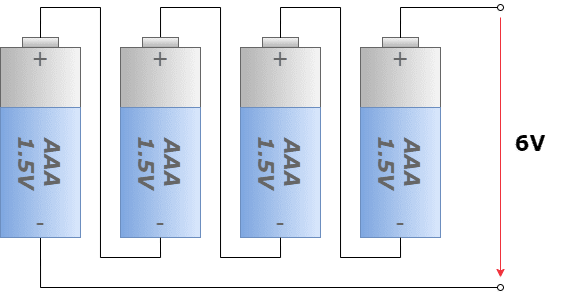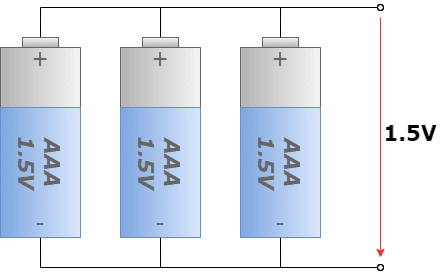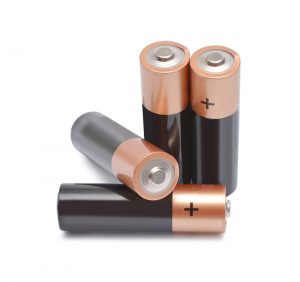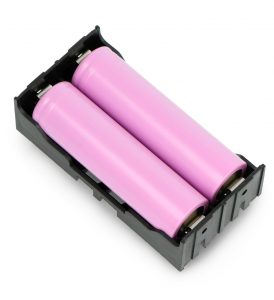Table of Contents:
Without electricity, there would be no electronics. Every device we know needs power to perform its function. Many devices draw their power and voltage from the 230 V grid, and the only concern for the user is the length of the cable to the wall socket or the number of free sockets on the power strip. But what about mobile devices or those whose “tethering” by a power cable would compromise their functionality, such as mobile robots? Let this simple guide dispel your doubts!
Voltage is the basis
The most basic and common power sources are ordinary AA alkaline batteries with their smaller counterpart AAA. These have a voltage level of 1.5V, but when it comes to any project, this value is of little use – it will only power the simplest of electrical circuits such as a single LED, although even this is not entirely obvious as it will not even glow at full power. Fortunately, voltage has some properties that are extremely useful. What does this mean?
Electronic devices usually require a precisely defined value of the supply voltage. In order to achieve it for the system with its own power supply we can use the characteristics of the system of power cells, i.e. batteries or accumulators, connecting their terminals in an appropriate way. And there are two of them – in parallel and in series. The type of connection leads to different effects – depending on the need and purpose of the system we can increase the voltage value, or increase the total capacity – that is the amount of charge with which the battery supplies the system with the current of a specified amperage for a specified time – expressed in Ampere-hours [Ah], e.g. so that the power supply lasts longer.
Series connection
Connecting a battery or accumulator in series involves connecting the cells with opposite poles, that is positive and negative. Creating a chain of cells in this way causes the voltage of each individual element to add up. This is where the name of this type of connection comes from, as the links are thus arranged in sequence, or series. In practice, this means that by connecting e.g. two AA batteries of 1.5 V we reach a voltage of 3 V, with three cells – 4.5 V, and so on as we add more power sources to the circuit. It should be remembered that in order to use such a prepared, “strong” voltage source, we connect the pole of the first cell left and the other pole of the last cell in series to the circuit.

And what about capacity? In this case, absolutely nothing. Series connection affects only voltage value, and capacity of each battery connected in series remains the same, no matter how many segments are connected together. However, if you have larger batteries – with higher voltage value and you don’t want to increase its value, but you want to work longer, you should change tactics and use parallel connection.
Parallel connection
Parallel connection of power cells involves connecting the battery or accumulators with the same poles, i.e. positive to positive and negative to negative. This connection results in the summation of the capacities of the individual cells. In this case it can be illustrated as if the batteries were placed “side by side” and connected in the same way to common terminals and with the same polarity reversal.

That is why we talk about parallelism of this type of connection. By connecting single cells in this way we get one “big” power source (with enlarged capacity), which is enough to power the circuit for a longer time. In this case, however, the voltage value does not change – by connecting 1.5 V batteries in parallel, we still have 1.5 V at the tips, but the cells prepared in this way will simply last longer.
Two ways, different applications
Useful, right? With this knowledge we can successfully make powerful, series voltage sources to power remote controlled electric cars, robots, or simply select cells to regulate the speed of simple fans or mini motors or light sources like LEDs by connecting them in a long enough series.
On the other hand, if you find a power source with the right voltage value and you want to keep some device working for as long as possible, for example a mini alarm based on a simple photoresistor or a more advanced, small transmitter or a mobile temperature sensor – go ahead and add more cells in parallel.
In electronics, it is said that if something is to work well, it must look well – a well-designed circuit, clearly routed wires and evenly placed components are helpful for, among others, service and diagnostics. Clutter and carelessness do not bode well, all the more so when dealing with the power supply – take care that the connection is durable, safe and practical. This is especially true when it comes to batteries, which will need to be replaced after a while. Botland also offers such simple items as battery racks. If you don’t want to bother with soldering the connections yourself, it’s worth using ready-made solutions, connected in series or parallel depending on your needs.
How useful was this post?
Click on a star to rate it!
Average rating 0 / 5. Vote count: 0
No votes so far! Be the first to rate this post.





















